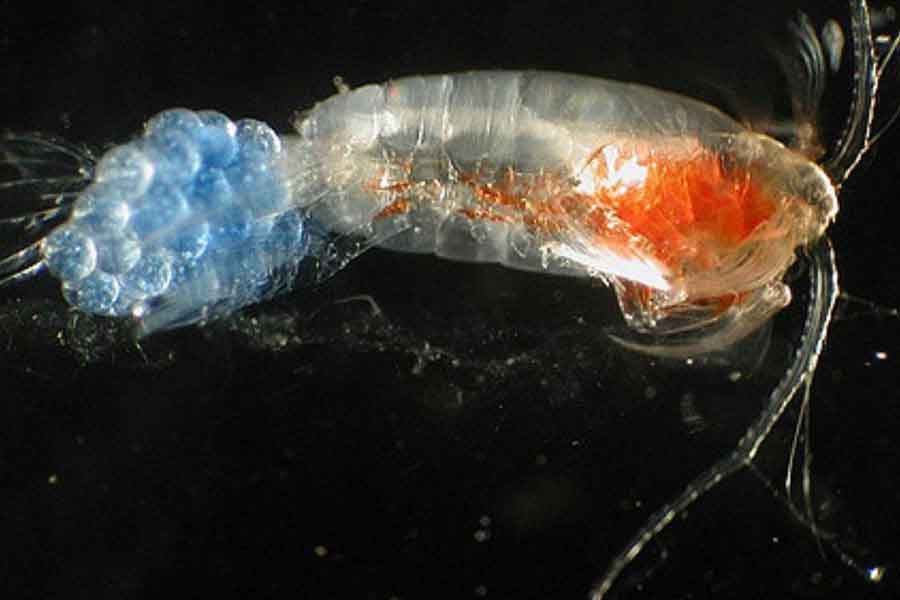
The largest mass animal migration on the planet doesn’t occur on the African plains or in the blue sky of birds. It happens every day in the ocean.
Copepods are small crustaceans that make up the zooplankton. Their nearly invisible transparent bodies, measuring only 1.7 millimeters, are difficult to spot in the darkness. That’s why during the day, they congregate in the zone between 200 and 400 meters deep, where sunlight barely reaches.
However, during twilight, they ascend to the surface in search of their food source: diatom algae that perform photosynthesis in the well-lit surface zone. After spending the night consuming a large amount of microalgae, they slowly descend back to the dark depths at dawn. This daily movement is known as «vertical migration» and constitutes the largest mass movement of creatures on this planet. Considering the body size of a copepod and the distance it covers each day, it’s equivalent to a human swimming 400 kilometers daily.
In the ocean, copepods outnumber and spread more widely than insects on land, and they may be the most abundant creatures on the planet. It’s common to find concentrations of over 100,000 individuals in a single cubic meter of seawater. By vibrating their antennae, they create currents that bring microscopic diatoms toward their feeding apparatus. A single copepod could consume up to 120,000 diatoms in a single day. Copepods, in turn, serve as food for other carnivorous species such as krill, which then becomes a food source for large whales.
For such a lightweight and small animal, water feels heavy, viscous, and resistant to movement. That’s why they leave a trail in the water column they traverse, which remains visible for several seconds after they pass. They use these trails to facilitate the location of mating partners. However, as the beating of their lower antennae during feeding generates a unique vibration field around their bodies, they rely on two more developed antennae that extend beyond their own field to detect other copepod trails. Such a concentration of individuals facilitates prolific reproduction. Males fertilize the eggs by transferring sperm to the female, who carries the fertilized eggs attached to her abdomen for several days until she releases them at the moment of hatching.
Every night, as the sun sets, a silent multitude of ghostly crustaceans rises to the surface in search of food. Their numbers are so vast that they are impossible to imagine; a cupped hand could contain thousands of them. Their fragile anatomy is a fundamental and indispensable element for the planet’s survival. They are everywhere, in every sea, in every wave. They are the silent pulse of the ocean; they are the very foundation of life.
«You cannot defend what you do not love, and you cannot love what you do not know.»

